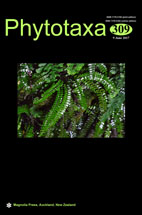Abstract
Within the huge diversity of genus Passiflora, series Laurifoliae constitutes a strikingly uniform group, widely distributed in neotropical rain forests, at low to moderate elevations. Given its morphological and ecological unity, Killip mentionned it as an «exceedingly difficult» group. The lack of clear morphological criteria has not helped in delimiting it, and the confusion has grown with the addition of new species and criteria. As a preliminary step in the study of diversity within series Laurifoliae, we re-examine its morphological delimitation, assessing how its current 29 species (including the highly similar P. pachyantha and P. killipiana) conform to 20 criteria from different authors. Three criteria (indumentum on vegetative parts, stipule glands, membranous limen) appear to be irrelevant, because they are either too variable or rarely recorded in the species descriptions. Using the 17 remaining ones, 24 typical species show very limited variations, five of them differing by only one criterion. Among them, we retain terete to angular stem, setaceous or linear stipules soon deciduous, petiolar glands in one pair, leaves oblong, neither peltate nor lobate, three glandular bract over 1 cm long and free, flowers pendent, with two campanulate outer series of filaments (most other series much reduced or aborted). Five species, P. guazumaefolia, P. kikiana, P. odontophylla, P. ischnoclada, and P. maliformis, differ by three to nine traits, not found in the typical representatives of the series, so they can be excluded from it. Passiflora kikiana should be classified into series Kermesinae. For the four other ones, a satisfactory solution implies a more global study, involving other series.

